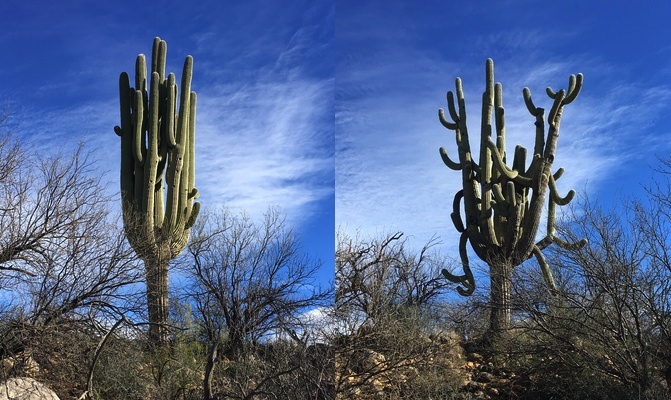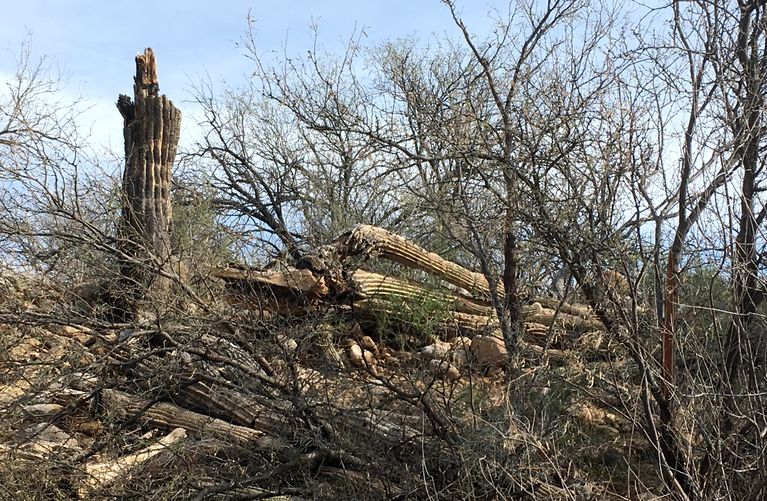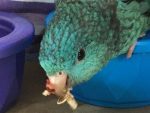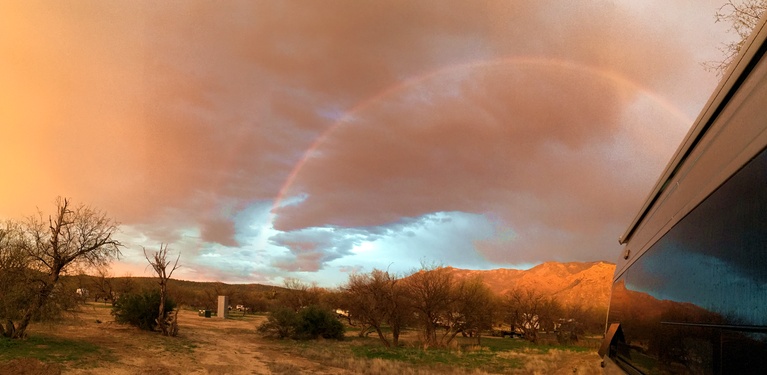Catalina State Park is in the foothills north of Tucson. We enjoyed our stay here last year, so this time we decided to stay for two weeks. We spent most of our time hiking and biking.
This winter has been very warm. Sutherland Wash, which runs through the park, was completely dry.
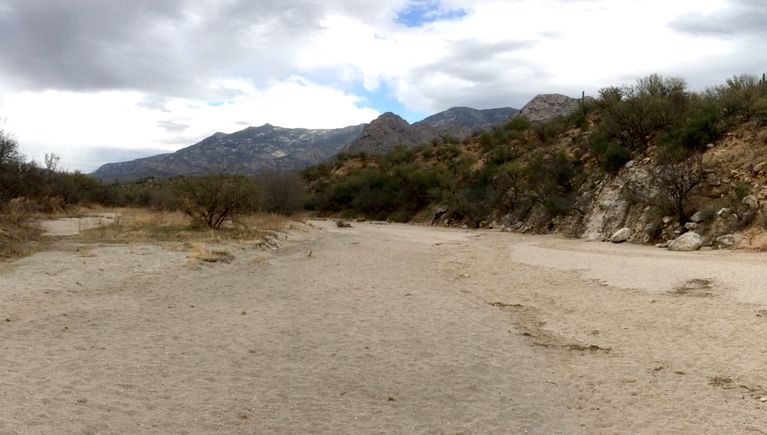
It did rain once, but the rain evaporated before reaching the ground. The clouds made for a nice sunset.
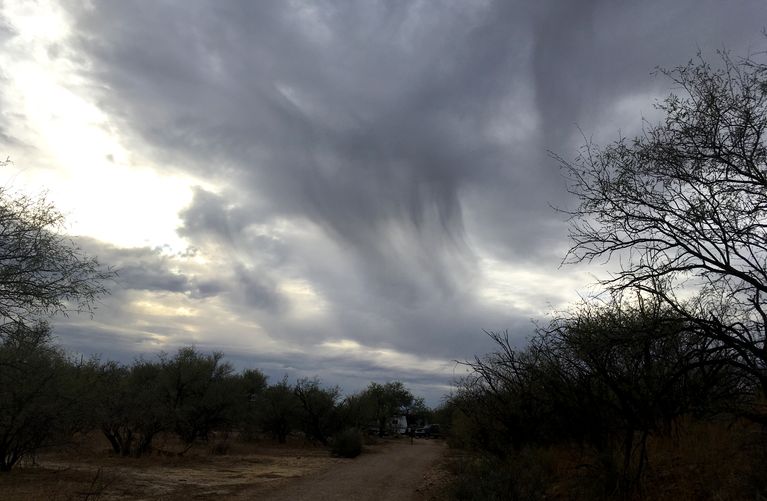
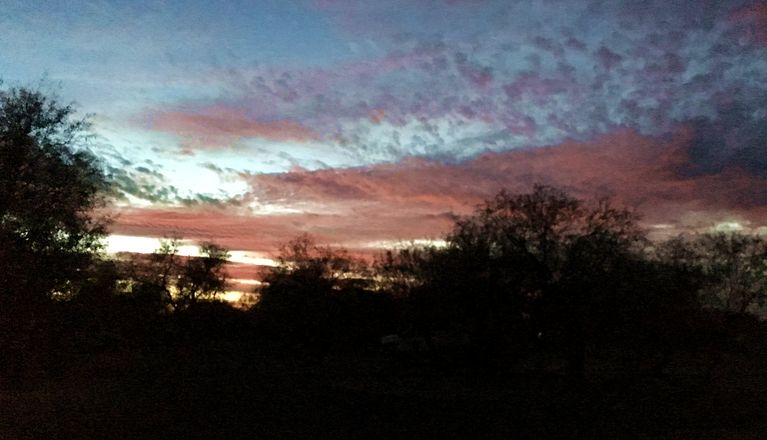
Tucson has an amazing network of paved off road bike paths that run alongside the “rivers”, which are dry stone beds at this time of year. We accessed the Cañada del Oro river park path right outside the campground. We could have ridden south all the way through Tucson because the paths run for 131 miles. We opted for some shorter rides, and got to see wildlife (quails, roadrunners, a quick glimpse of 2 cougars). The path was also handy for visiting a farmers market and getting supplies including hardware and groceries.
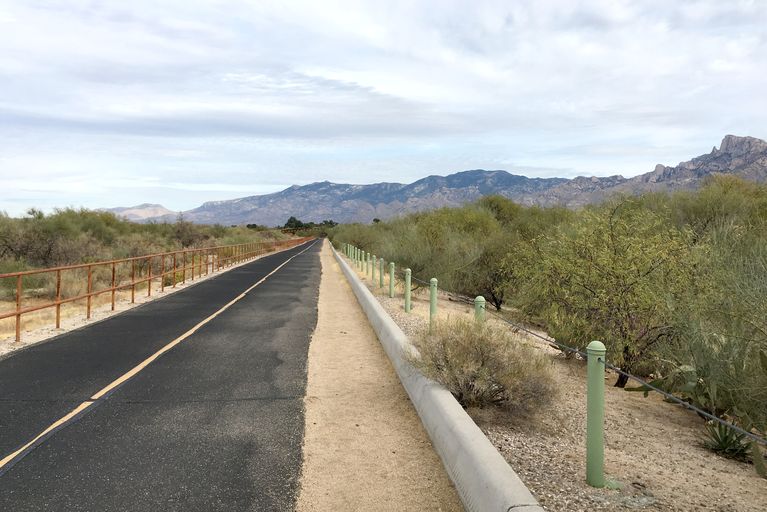
In the park, we went on a geology walk and a birding walk. The birding walk was particularly successful, with many birds that were new to us: 2 woodpeckers (Gila and Ladder-backed), 4 towhees (Spotted, Canyon, Abert’s, Green-tailed), the Ruby-crowned kinglet, the Cactus wren, and the Curved-billed thrasher. We saw 2 birds that reminded us of cardinals. The Pyrrhuloxia is very similar except for being more gray than red. The Phainopepla, pure black with a crest like a cardinal, is a mistletoe specialist. It eats the berries, and its poop sticks to the mesquite tree bark so the mistletoe seeds can take root.
We also hiked several park trails. Most of them cross the washes, so it was very convenient that they were dry. We saw beautiful views of mountains and cactus, lots of birds, particularly Gambel’s quail, roadrunners, and woodpeckers, and one coati, a relative of the raccoon.
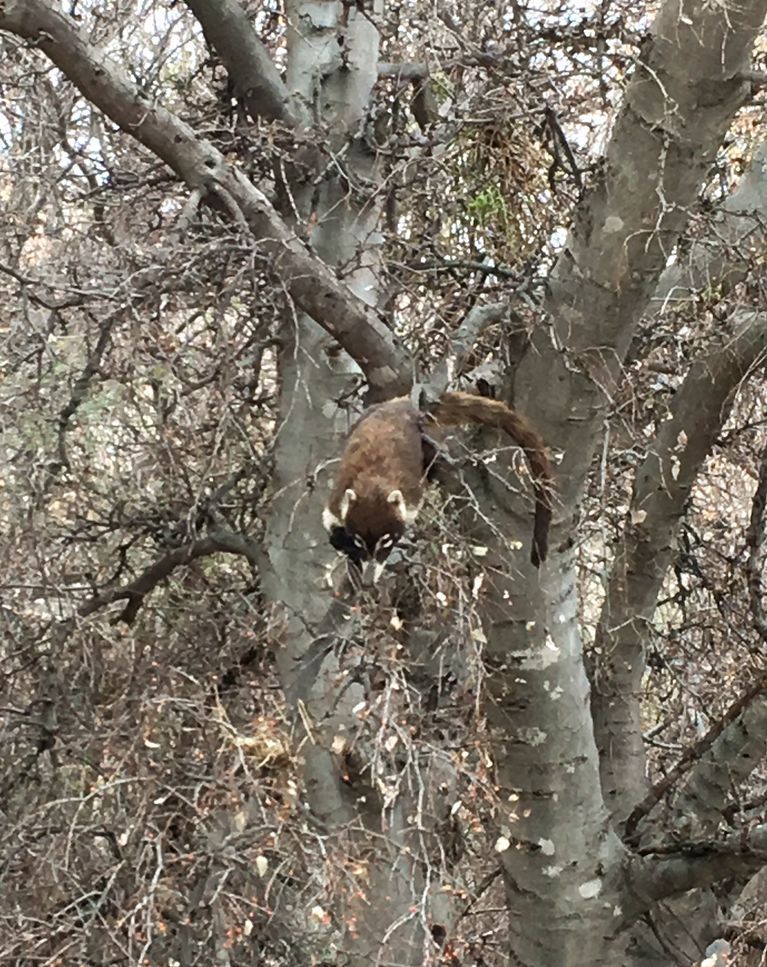
The composite below, from last year, shows two saguaros. The one on the left displays normal growth patterns. The one on the right, well, doesn’t. The second photo below shows the results of being the highest point during a thunderstorm. Our geology tour guide, Karen, told us that it got hit by lightning.
